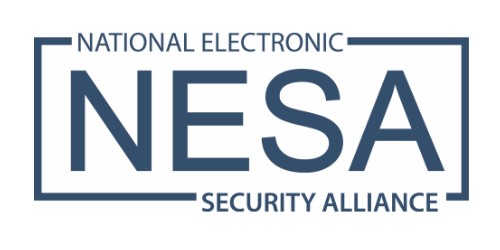
11.14.24 -SSI – Leah Grout Garris
By integrating video and audio devices with analytics, you can create powerful, intelligent solutions for clients in nearly any industry.
One of the most important steps a security integrator can take to demonstrate value to customers is showing them how to leverage their devices and systems to gather actionable insights through analytics.
Instead of selling clients various parts and pieces based on price, you can provide them with a true solution—one that will increase in value over time. You’ll also be giving them something they can use to solve business problems and make better decisions, not just monitor activity or control building access.
“This is a great way to build a long-lasting relationship with a client, too,” says Chris Wildfoerster, audio program manager for Axis Communications. “You’re building a strategic partnership instead of making a transactional deal.”
Analytics Enable Proactive Detection and Response
When NSCA sat down with Axis Communications and Pavion to create a list of IP endpoints that security integrators can use to create custom connected solutions, the number went well past 100.
By integrating these video and audio devices with analytics, you can create powerful, intelligent solutions for clients in nearly any industry: education, healthcare, manufacturing, government and beyond.
By integrating these video and audio devices with analytics, you can create powerful, intelligent solutions for clients in nearly any industry: education, healthcare, manufacturing, government, and beyond.
Here are some examples:
- Automated alerts regarding incidents outside the building: By connecting cameras, intercom systems, and analytics, security incidents and operational issues can be detected immediately and brought to the attention of the right people so action can be taken.
- Blocked emergency exit alerts: By integrating cameras with door sensors and alerting systems, security and facilities teams can be notified when something interferes with clear access to emergency exits.
- Queue management: By bringing digital signage, cameras, intercom systems, and analytics together, you can help your customers reduce wait times and better manage foot traffic so they can improve customer satisfaction.
- Possible security threats inside the building: Cameras, audio monitoring systems, and analytics can work together to detect and alert staff about incidents unfolding throughout their building—whether it’s an argument that’s escalating or someone slipping on a wet floor—for timely intervention.
- Dwell time monitoring and alerts: When a perimeter detection system notices someone lingering in a restricted area, it can indicate to the intercom system that a prerecorded message should be played to let the unauthorized person know they’re under surveillance and that security has been informed.
This level of integration supports situational awareness through proactive deterrence and response: Your clients will always know what’s happening in and around their building. This not only creates a safer environment but also improves the experience your client is able to offer.
“Analytics provide the platform you need in order to analyze the data your devices capture,” explains Will Seifert, president at Pavion. “Integrators can help clients determine how they can configure those systems to capture the data they need and then use that data to make decisions and even change standard operating procedures based on the new information that’s revealed.”
Make Sure You and Your Clients Are Ready
Before you can do this for your clients, however, Seifert says it’s crucial to collaborate with them to determine:
- What they plan to use their systems for
- How they plan to use the data they capture
- Who will be responsible for managing their systems and data
- Whether their existing network can support this level of connectivity
- How they will protect connected systems and data
“Integrators can also give clients ideas about how to use the information,” explains Seifert. “For example, your client might be able to leverage information from the sensors in their lighting system to optimize energy use and enhance efficiency. Or they could use the sensors in their access control system to better understand occupancy patterns and improve security protocols.”
How AI Fits into the Picture
Artificial intelligence (AI) can take analytics even further, enabling your clients to do things like:
- Automate processes and workflows to reduce manual effort and errors
- Improve energy efficiency to optimize power use and consumption
- Implement real-time data analysis for better business outcomes
- Recognize advanced patterns to predict future events or failures
- Conduct holistic analyses to identify correlations across systems that may not be obvious when viewed separately
- Personalize greetings or target advertisements to enhance engagement
By leveraging AI as you integrate audio, video, and analytics, you can provide your clients with intelligent, responsive solutions.
“There are many security and safety aspects associated with AI and analytics,” explains Quang Trinh, IoT and AI platform technologies business development manager for Axis Communications. “For example, cities are using AI to understand traffic trends and the causes of bottlenecks.
“In offices, sensor data output could be uploaded into a business intelligence platform and combined with other datasets to measure things like workspace utilization and employee movement patterns to understand behavior and trends. All this can be done without impeding the privacy of staff or customers,” says Trinh.
How can security integrators prepare to weave AI into what they offer to customers? Trinh recommends a few things:
- Watch publicly available videos on the fundamentals of AI published by institutions like Harvard, Stanford, MIT, and even big cloud providers. While the analytics used will be driven by your customers, the AI fundamentals will always remain the same on every project.
- Get to know the platforms used for data visualization and business intelligence, whether it’s Power BI, Tableau, or others.
- Understand how your vendors and manufacturer partners integrate with business intelligence platforms.
The information shared in this article is part of an NSCA webinar titled Safety & Security Through Networked Solutions, which featured insights from Axis Communications and Pavion. Members can watch the webinar here.
Leah Grout Garris is marketing and communications content manager for NSCA.
